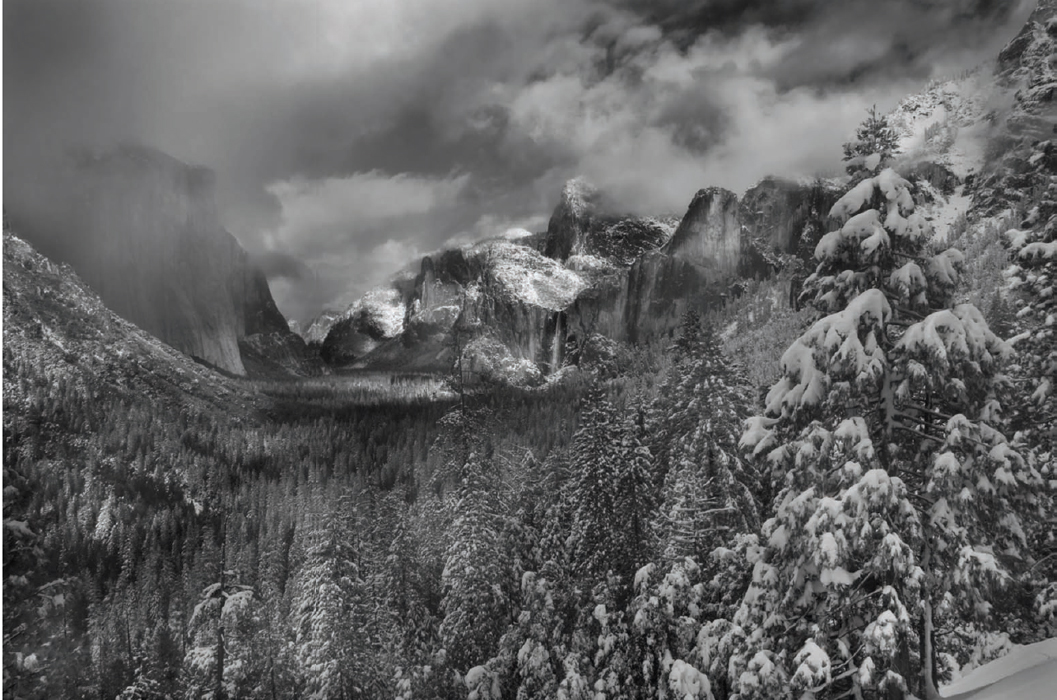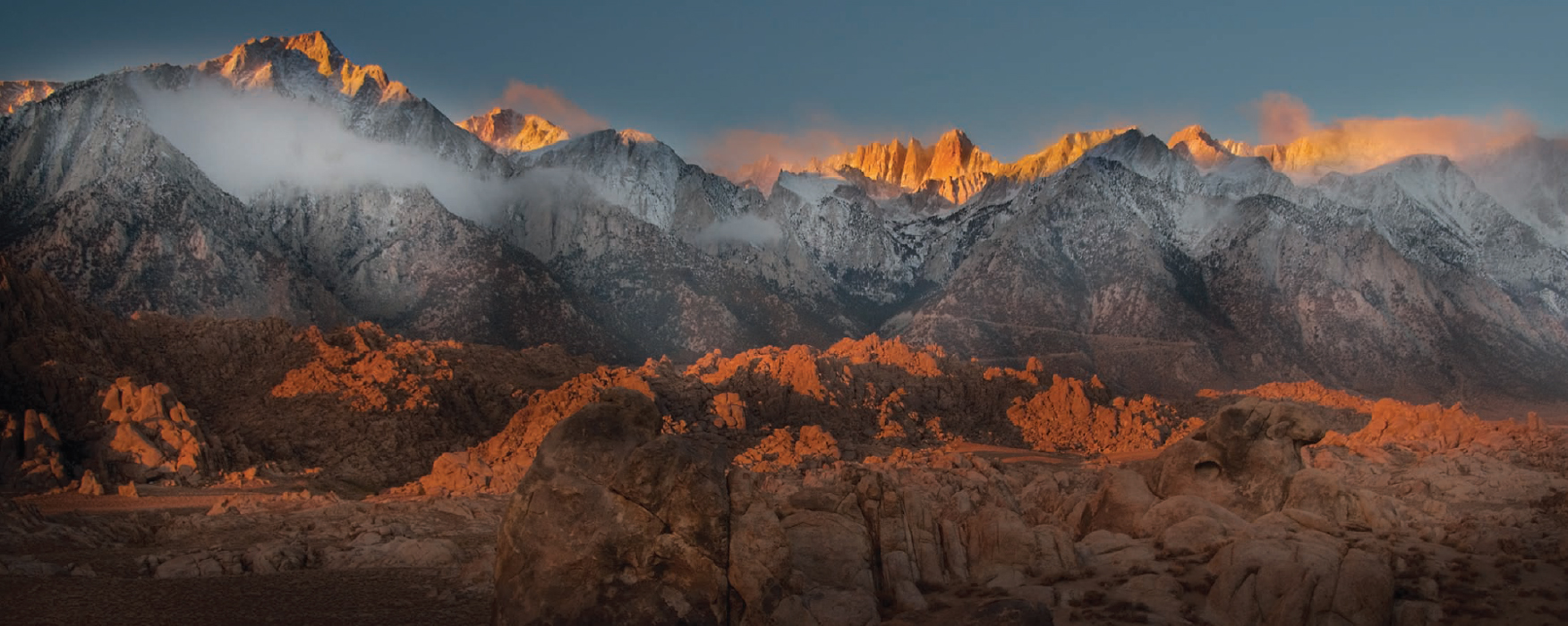Introduction
If you've ever stood on the rim of a canyon and watched the afternoon colors turn to sunset, listened to the splash, gurgle, and roar of a river flowing swiftly past, or looked up at a spectacular sky to see the clouds sailing by, you'll understand the urge to use photography to capture the scenery that surrounds us. But as Ansel Adams, the great master of landscape photography, observed, “Landscape photography is the supreme test of the photographer, and often the supreme disappointment.”
There seems to be some sort of paradox or conundrum in operation here. It is relatively easy to find interesting—or, indeed, spectacular—landscapes. Unlike some other kinds of photography, no specialized gear is needed to capture these landscapes. In real life, most people are moved by sublime landscapes, and it's not uncommon to find romantic and religious sentiments brought out through a landscape view. It's easy for most people to intuitively understand the emotional appeal of nature's landscape.
In addition, landscape photography is not the most specialized or technically difficult kind of photography. Often, the key issue is simply being there. As Ansel Adams put it, “Sometimes I do get to places just when God's ready to have someone click the shutter.”
But despite the apparent technically straightforward aspect of landscape photography, and its easy appeal to a wide audience, creating landscape photos that are not trite, that help viewers understand underlying truths about things, and that convey the sense of awe most of us feel when confronting the actual landscape is devilishly difficult.
- Considering the impact that Ansel Adams's photography has had on my life, it's hard to photograph his beloved Yosemite Valley without considering some of the images he's made famous—such as the photo of the clearing storm taken not far from where this photo was shot.
In framing this photo, I tried to keep the classic Yosemite imagery in mind while changing the composition—by moving so I could include the trees on the right—to add my own stamp to the photo.
20mm, 1/40 of a second at f/22 and ISO 100, tripod mounted

According to Ignatius of Loyola, “Give me the child, and I will mold the man.” My love for landscape photography started early and helped to form my life. The first photo I remember losing myself to feelings of awe and wonder at the sublime was a landscape: a large print of the Ansel Adams “Moonrise Hernandez, New Mexico” which was hanging at the Museum of Modern Art in New York City. During the same visit, I lost myself in a very different kind of landscape because the oversized, impressionistic Water Lilies by the painter Claude Monet was also on exhibit at the Modern. I was only ten years old, but my path was changed irrevocably.
In the years that have followed as a photographer, landscape photography has been one of my greatest passions, joys, and—sometimes—frustrations. I've pursued my love of the landscape by crossing the Brooks Range—the northernmost mountains in Alaska—solo, on foot, and for part of the journey without food. I've dangled from small planes and helicopters to photograph urban and wild landscapes from above. And I've sought the spaces of the night, to photograph landscapes and show them in ways they haven't often been seen before.

In Creative Landscapes: Digital Photography Tips & Techniques, I will share what I have learned in my journeys to photograph landscapes over the course of many years: the adventure, the awe, and the mystery, as well as the technical side of landscape photography. My hope is that this book will convey my love for landscape photography, and help you become a better photographer of the landscapes that interest and excite you.

